Things to Do in La Candelaria, Bogota Historic Centre
La Candelaria in Bogota is the number one neighbourhood to visit during your stay in the Colombian capital. It is essentially the historic centre of Bogota and is filled with attractions, from interesting museums to beautiful street art and lively plazas. You could easily spend a day or more in this part of the city alone.
In this guide you can read about some of the places you should definitely add to your itinerary whilst exploring La Candelaria, with some additional recommendations on where to stay and eat. There’s a lot more to do in Bogota than just its historic centre though, so we suggest staying for at least 3 days to see everything the capital has to offer.
If you’d like to see what we got up to in La Candelaria, then make sure to watch our dedicated Bogota video on our YouTube channel. For more Colombia videos check out our Colombia Series.
Disclosure: This post may contain affiliate links, which means we may receive a small commission if you click a link and purchase something. Clicking these links won’t cost you anything, but it will help us to keep this site up and running! Learn more about our affiliate policy.
Introducing Bogota, Colombia’s Capital City
The sprawling city of Bogotá, Distrito Capital (Bogotá, D.C.) is located in the center of Colombia, on a high plateau known as the Bogotá savanna. Situated at around 2,640 meters (8,660 ft) above sea level, it’s considered one of the world’s highest capital cities along with La Paz, Bolivia and Quito, Ecuador.
Before the Spanish arrived, the area was inhabited by the Muisca people and their city was called Bacatá. In 1538, a new city was founded by Spanish conquistador Gonzalo Jiménez de Quesada, who named it Santa Fé de Bacatá. Later, in 1550, it became the capital of the viceroyalty of New Granada up until 1819. In 1810, the people of the city started to revolt against Spanish rule, but had to continue to contend with Spanish military loyalists until 1819. This was when Simón Bolívar took the city after his victory at the Battle of Boyacá.
In 1821 Bogota was made capital of Gran Colombia, which was a self-proclaimed state that incorporated modern day Colombia, Ecuador, Venezuela and Panama between 1819 and 1830. After this state dissolved, the city stayed the capital of New Granada, which later became the Republic of Colombia. In 2000, the capital’s name was officially changed from ‘Santa Fé de Bogotá’ to ‘Bogotá’.
Over the past few centuries, Bogota has evolved into one of the most vibrant Latin American cities. It’s the largest city in Colombia and also the fourth most populous city in South America.
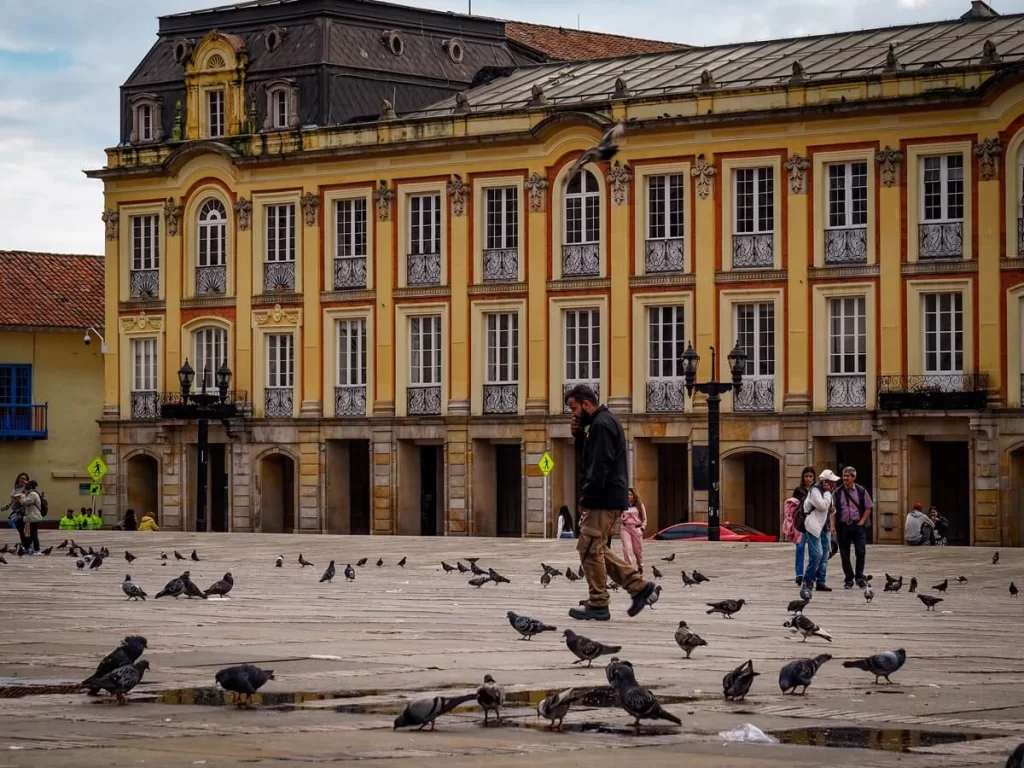
Things to Do in La Candelaria, Bogota
The neighbourhood of La Candelaria in Bogota is the Historic Centre, or Old Town, of this huge capital city. With all the modern high-rise buildings off in the distance, this area of the city is filled with colonial houses, narrow cobblestone streets and an abundance of street art. It definitely doesn’t feel like you’re in the fourth largest city on the continent.
La Candelaria is a very walkable district and where you’ll find some of the top attractions in Bogota. Below we’ll detail all the places that you can consider visiting during your stay in this district of the Colombian capital.
Our Top Travel Resources to Visit Bogota
- 🛏️ Find your accommodations with Booking.com
- 🎫 Book an organised tour in Bogota with GetYourGuide or Viator
- 📱Get an eSIM with Airalo to be able to use data
- 🛡️ Don’t forget to buy travel insurance via SafetyWing
1. Walk Around Plaza de Bolívar
Located in the heart of La Candelaria, Plaza de Bolívar is known as Bogota’s main square. It is also where some of Bogota’s most important buildings and offices are located. You’ll see the Palace of Justice, the National Capitol building, the Cathedral of Bogotá and the Palacio Liévano. In the middle of the square there’s also a statue of Simón Bolívar, which was sculpted in 1846.
During the Spanish era, the square was used to host markets, circus acts, and even bullfights. These events were suspended in 1861. Today, you’ll see that the square is still a busy meeting place for the residents of the city.
The nearly 14,000 square metre square reminded us of Mexico City‘s giant main plaza. Although Constitution Square is about four times bigger than Plaza de Bolivar. Whilst it definitely wasn’t our favourite main square in South America, it’s still a place that you shouldn’t miss in La Candelaria.
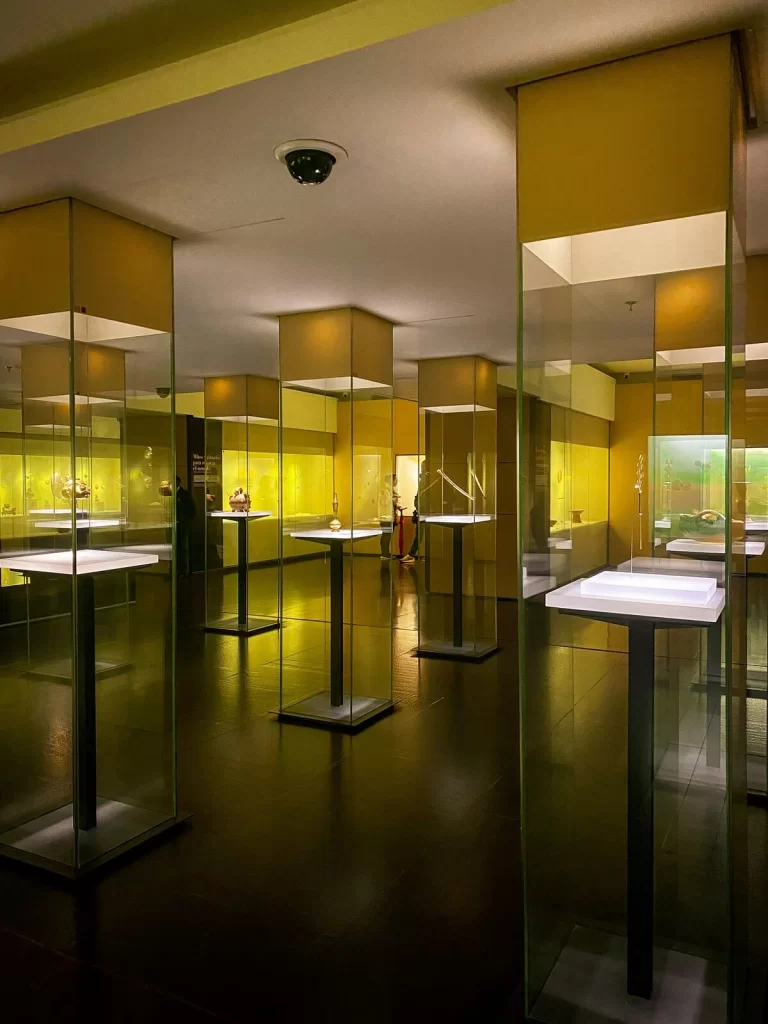
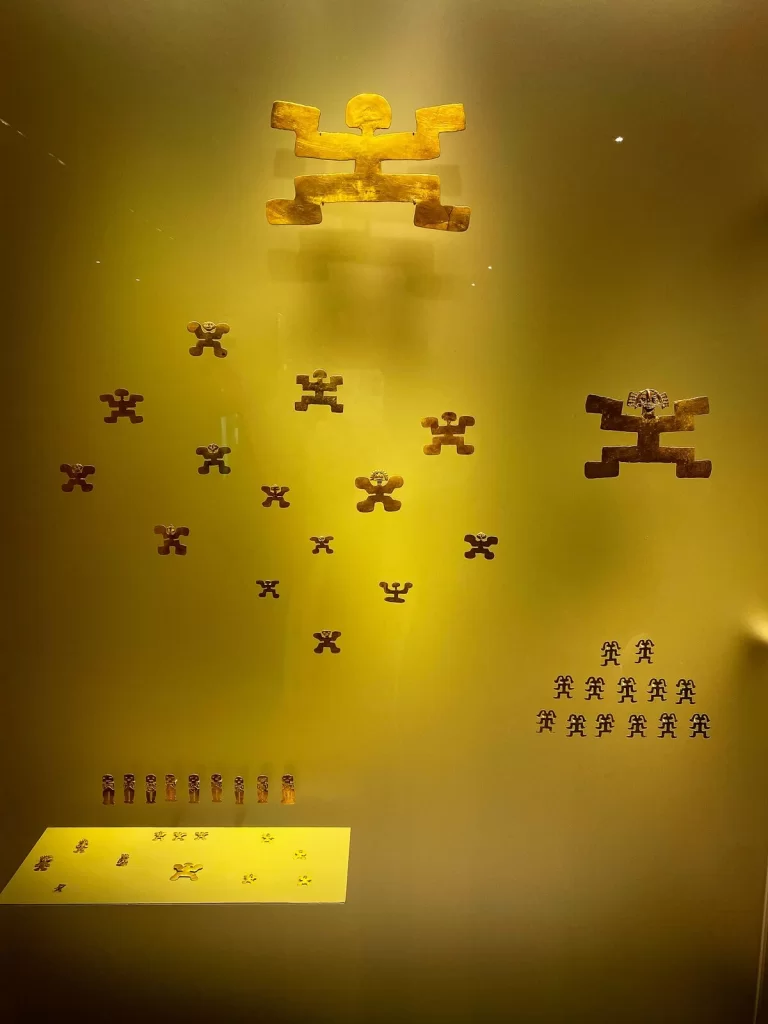
2. Visit the Gold Museum (Museo del Oro)
Located a short walk to the north of Plaza de Bolivar is Museo Del Oro, or the Gold Museum. It has to be one of the best things to do in La Candelaria. The museum displays around 55,000 pieces of Pre-Colombian gold, ranging from tiny and simple pieces to impressive ornaments.
A lot of the pieces were used daily by the Muisca and Tayrona people. One of the most interesting pieces in the museum is the Muisca Raft. This is said to show the gold offering ritual which is described in the legend of El Dorado.
We’d never seen so much gold in our entire lives, and therefore weren’t surprised by the fact that it’s considered one of Colombia’s best museums. You can also visit some smaller Gold Museums in Cartagena and Santa Marta, if you don’t have enough time in Bogota.
Opening Times: Tuesday to Saturday from 9AM to 6PM, and on Sundays from 10AM to 4PM. There are both English and Spanish descriptions. There are several floors, so expect to spend a few hours there if you want to see everything.
Entry Fee: 5,000 COP ($1.25 USD). On Sundays admission is free, so you can expect the museum to be more crowded.
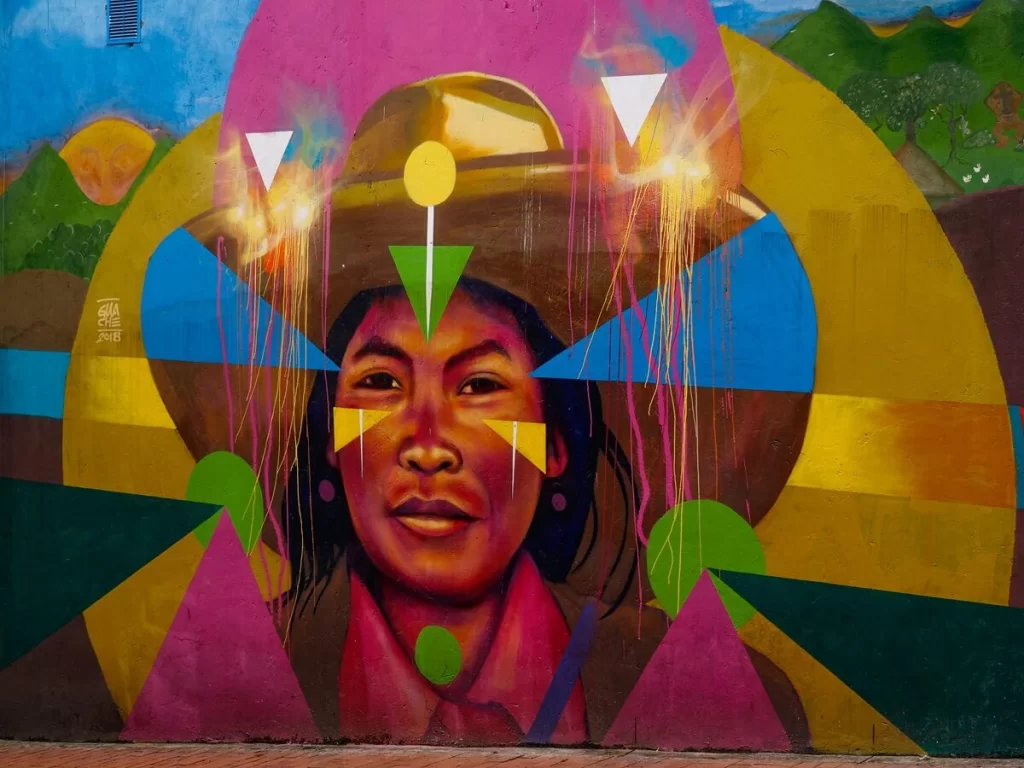
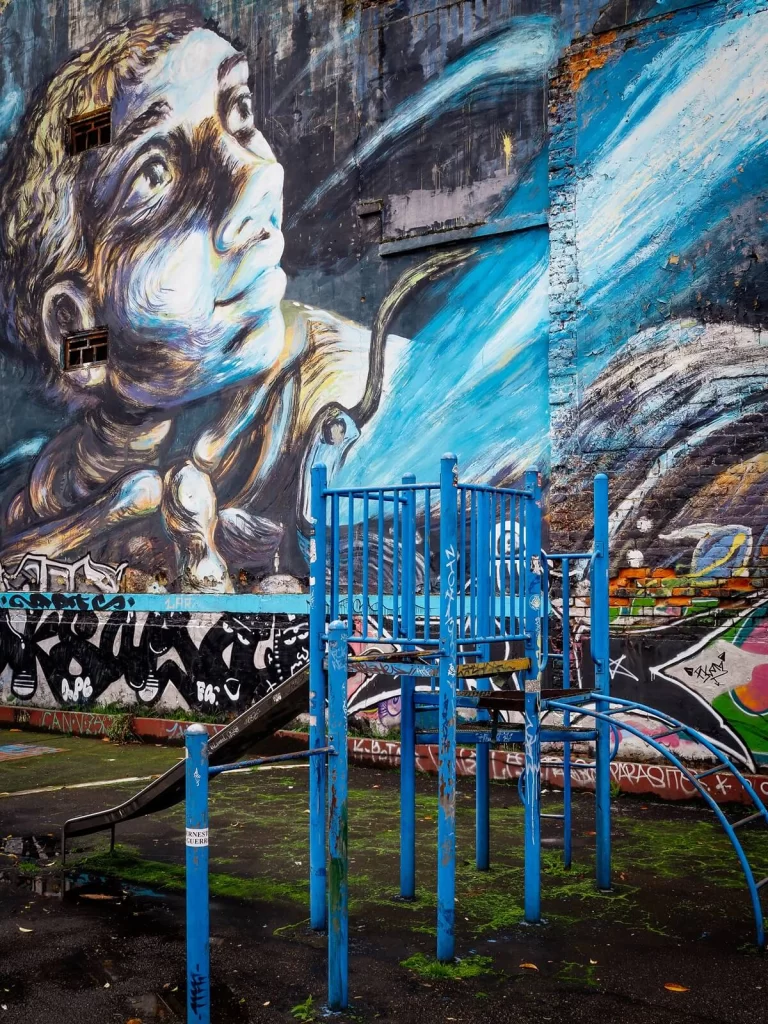
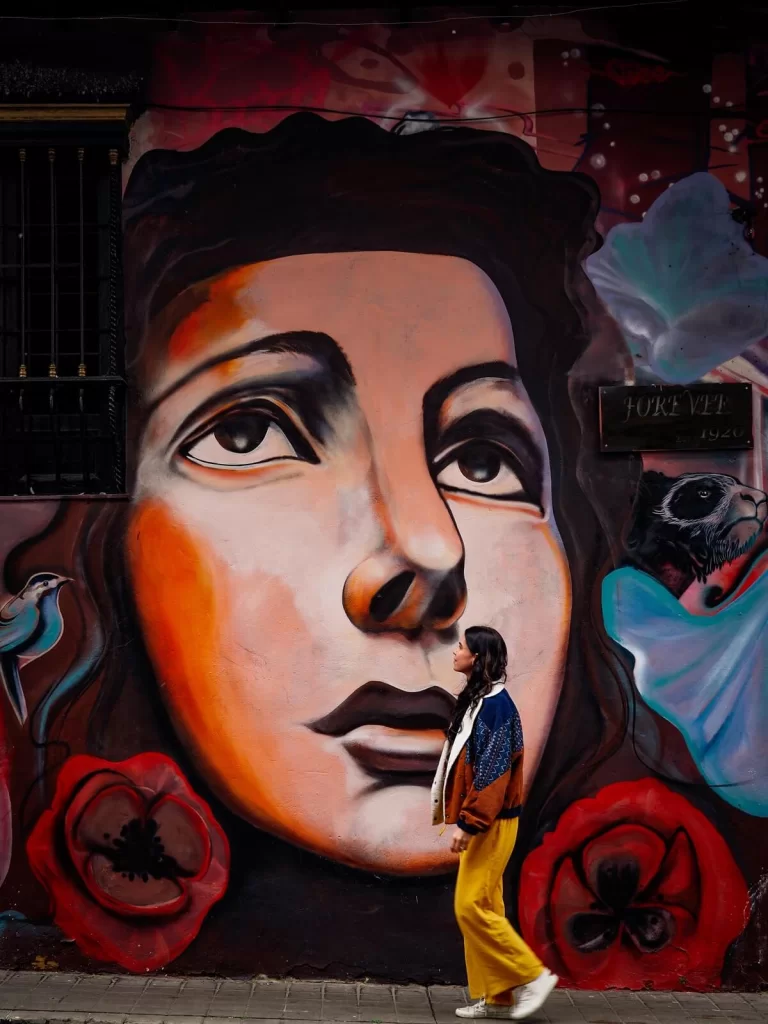
3. See the Best Street Art in La Candelaria
As you walk around La Candelaria, you’ll quickly notice that the streets are filled with colourful murals and street art. Today, Bogota is definitely one of the best cities in Latin America to visit if you want to see amazing street art.
Street art like this was strictly illegal in the past. Rapid changes to this policy have been happening in recent years due to violence, the death of a young artist, protests and even an event involving Justin Bieber. The impressive murals you see today in various parts of Bogota tell different stories, myths, and often have political messages.
Some of the best streets to hunt for murals in La Candelaria are Plazoleta Chorro de Quevedo, Calle del Embudo, Carrera 2, Carrera 3 and Calle 12f.
Whilst you can explore all these streets on your own, if you want to learn more about the meaning behind the street art then we recommend joining an organised street art tour.
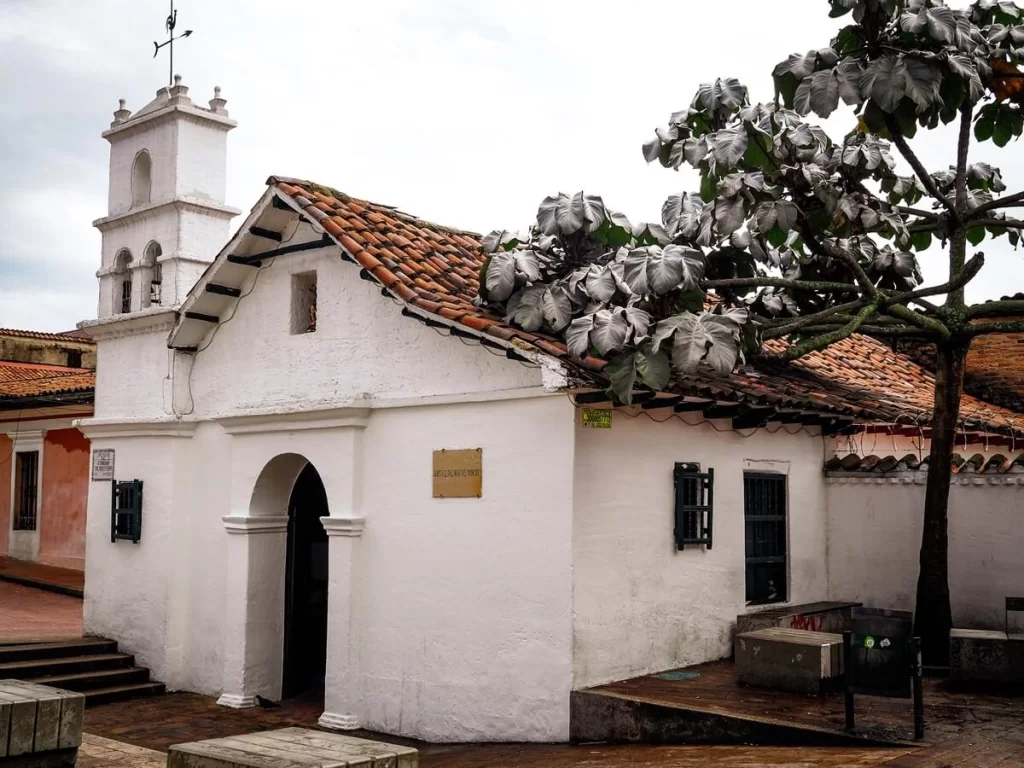
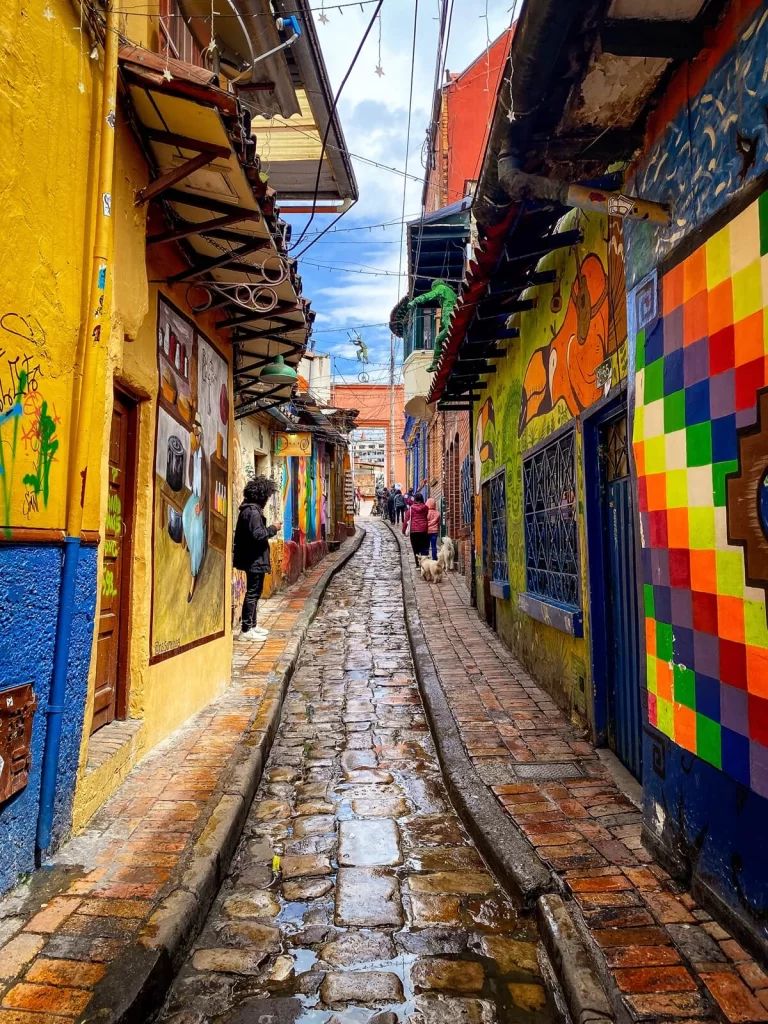
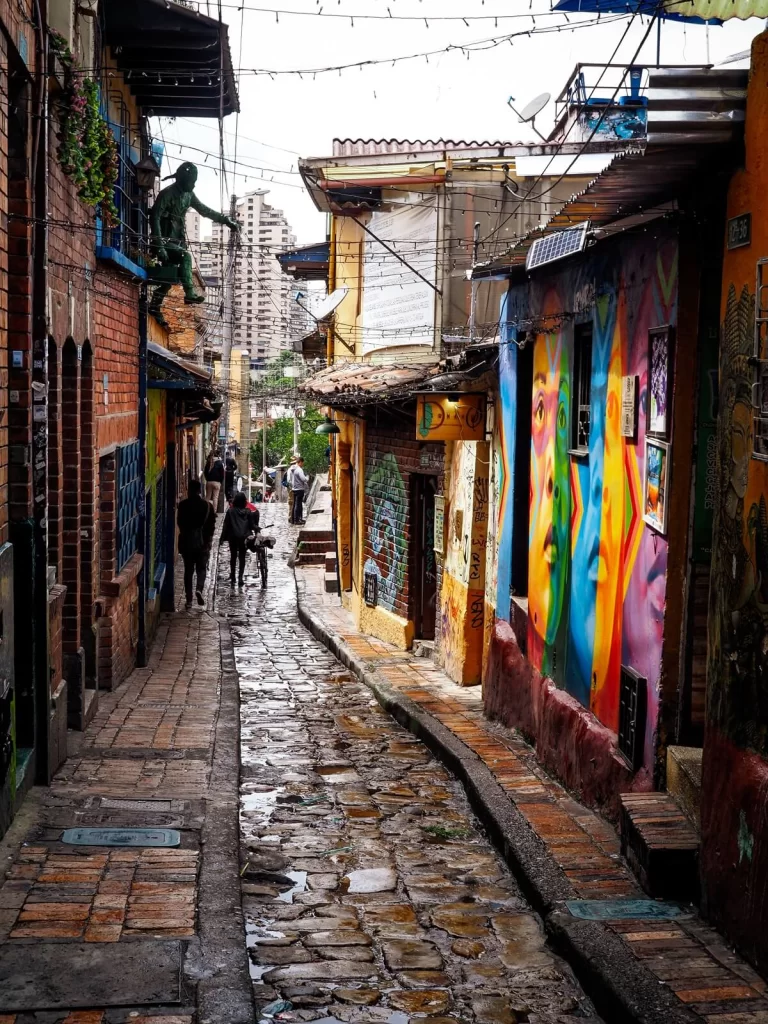
4. Enjoy Plazoleta Chorro de Quevedo and Calle del Embudo
We wanted to highlight Plazoleta Chorro de Quevedo and Calle del Embudo since you should visit these places even if you’re not interested in street art.
As well as murals, you’ll also find a small white chapel here and some cafes on Plazoleta Chorro de Quevedo, with street performers often adding a little extra to the atmosphere. It has been suggested that Bogota was actually founded in this plaza in 1538. Apparently, the ruler of the Muisca people would also use the location of this plaza as a vantage point to observe the Bogota savanna.
You can walk down the vibrant Calle del Embudo, or Funnel Street, which is a very narrow and colourful stretch of cobblestone street. Here, you can easily forget that you’re in the most populous city in Colombia.
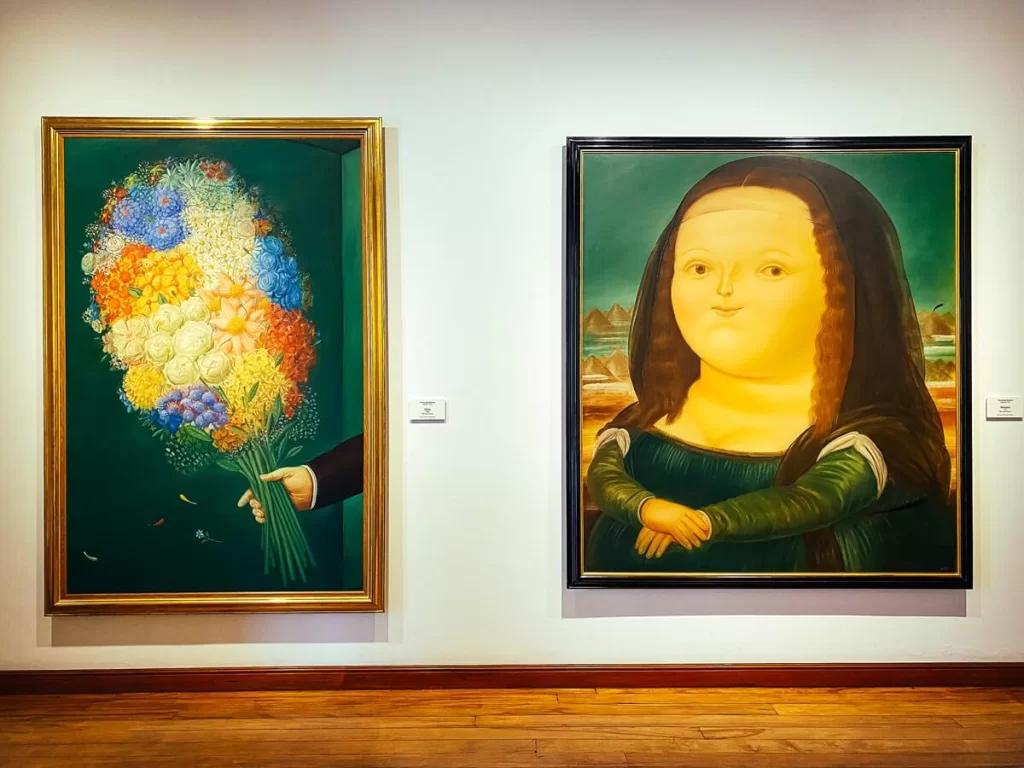
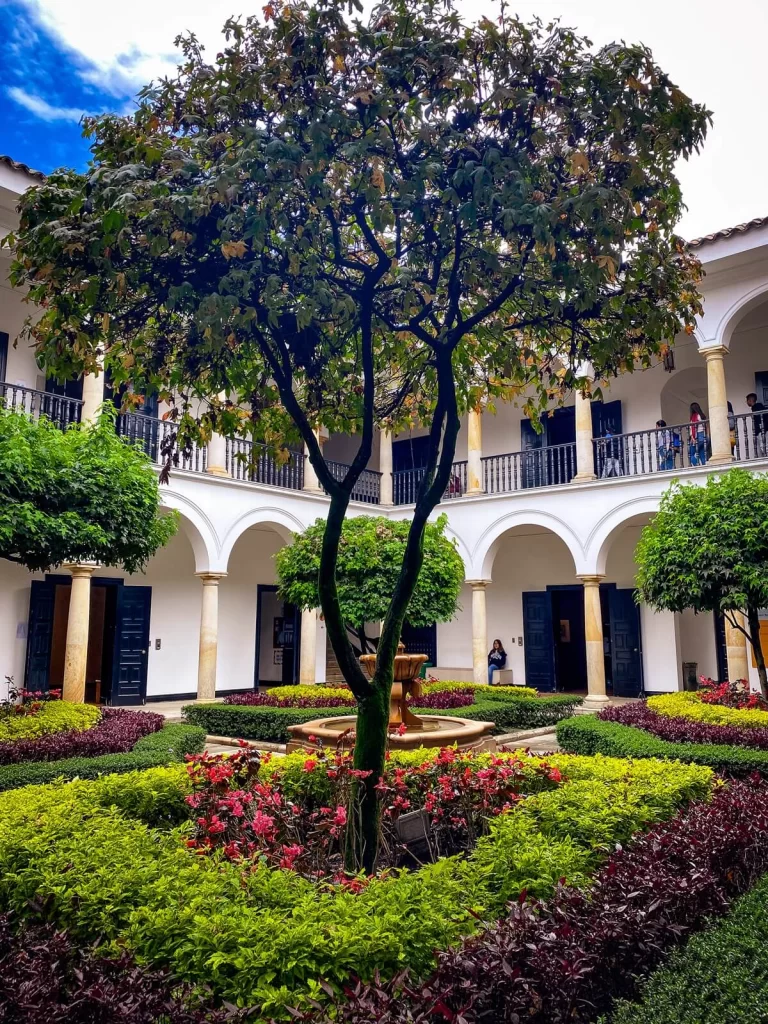
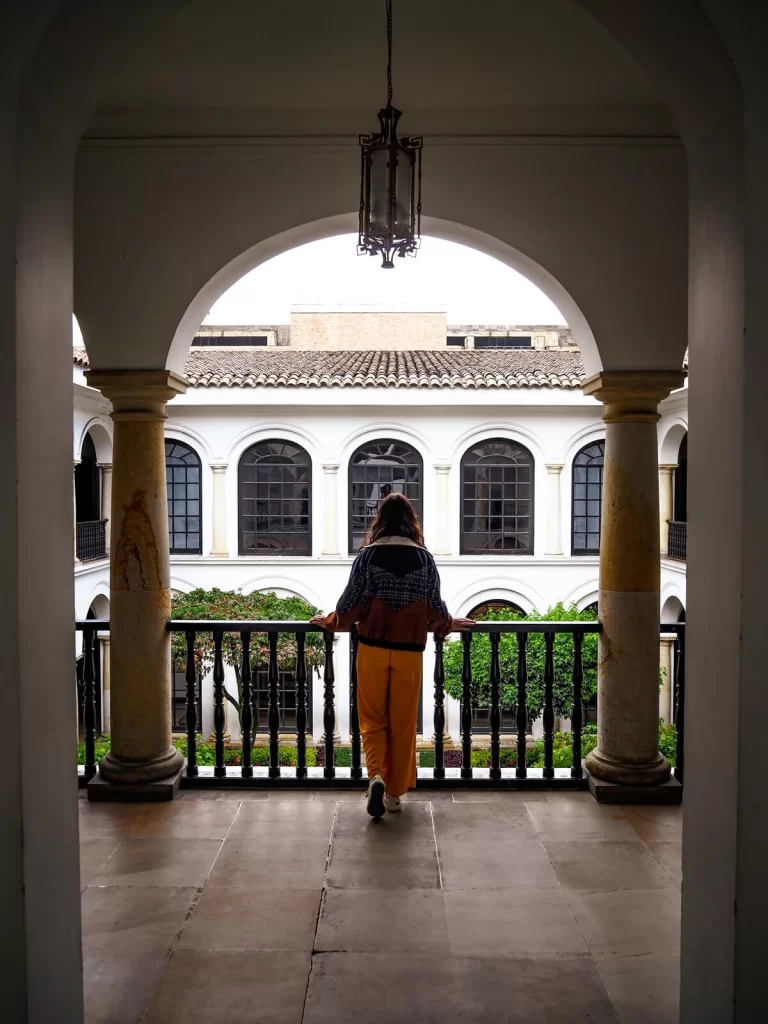
5. Learn About Colombia’s Most Famous Artist at the Botero Museum (Museo Botero)
La Candelaria in Bogota is home to many fantastic museums. One of the best art museums has to be the Botero Museum, which displays a lot of Fernando Botero’s artwork.
If you haven’t heard of Botero before visiting Colombia, don’t worry; you’ll quickly learn about him whilst you’re there, as he’s Colombia’s most internationally famous artist. Born in Medellin, the figurative artist and sculptor has a signature style called ‘Boterismo’. His work depicts people and animals in large volumes, which can sometimes represent political criticism or humor. Whilst we’re not the biggest art connoisseurs, we definitely enjoyed visiting museums across Colombia displaying Botero’s work.
You can also see artwork from artists like Dalí, Degas, and Picasso at the museum.
Opening Times: On Mondays and Wednesday to Saturday the museum is open between 9AM and 7PM. On Sundays it’s open from 10AM to 5PM. The Botero Museum is closed on Tuesdays.
Entry Fee: free.

6. Learn About Emeralds at the International Emerald Museum
Did you know that Colombia is the world’s largest emerald producer? It varies slightly each year, but apparently Colombia accounts for over 90% of the world’s emerald production.
So, if you’re not bored of museums yet, then definitely add a visit to the Emerald Museum to your La Candelaria itinerary in Bogota. It’s located on the 23rd floor of the Avianca Building just across from the Gold Museum. The museum is quite small compared to the huge Gold Museum and it houses a private collection of emeralds. During your visit, you’ll get the chance to learn about the history and processes of emerald mining in the country.
Entry fee is 5,000 COP ($1.25 USD). You cannot take photos inside and you’ll need to have your passport with you to enter.
Right next to the Gold Museum there are also some shops selling beautiful emerald jewelry. Since my birthstone is an emerald, I definitely had to check it out. Even if you don’t like emeralds, it’s still fun to browse for some jewelry.
You’ll quickly notice that just about everyone is selling emerald jewelry in Colombia. Of course, plenty of them are going to be fake and, honestly, sometimes it’s quite hard to tell the difference unless you know what to look out for. One of our main pieces of advice is if it seems too cheap to be true, then it’s most likely a fake. However, just because it’s expensive still doesn’t necessarily mean that it’s real!
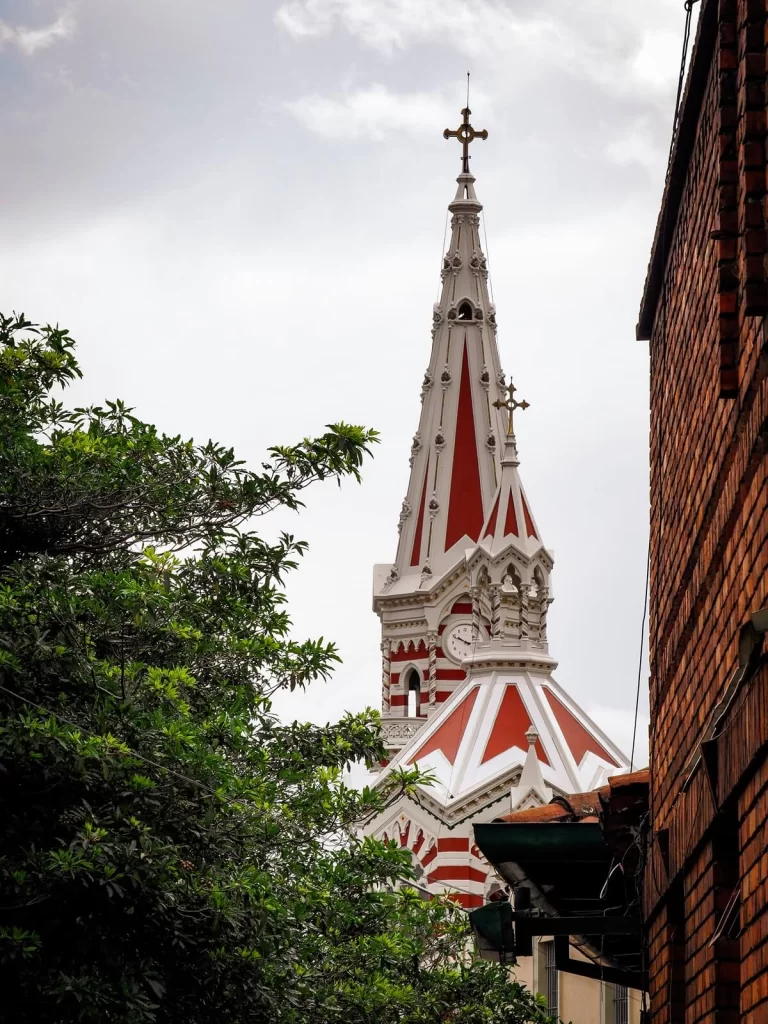
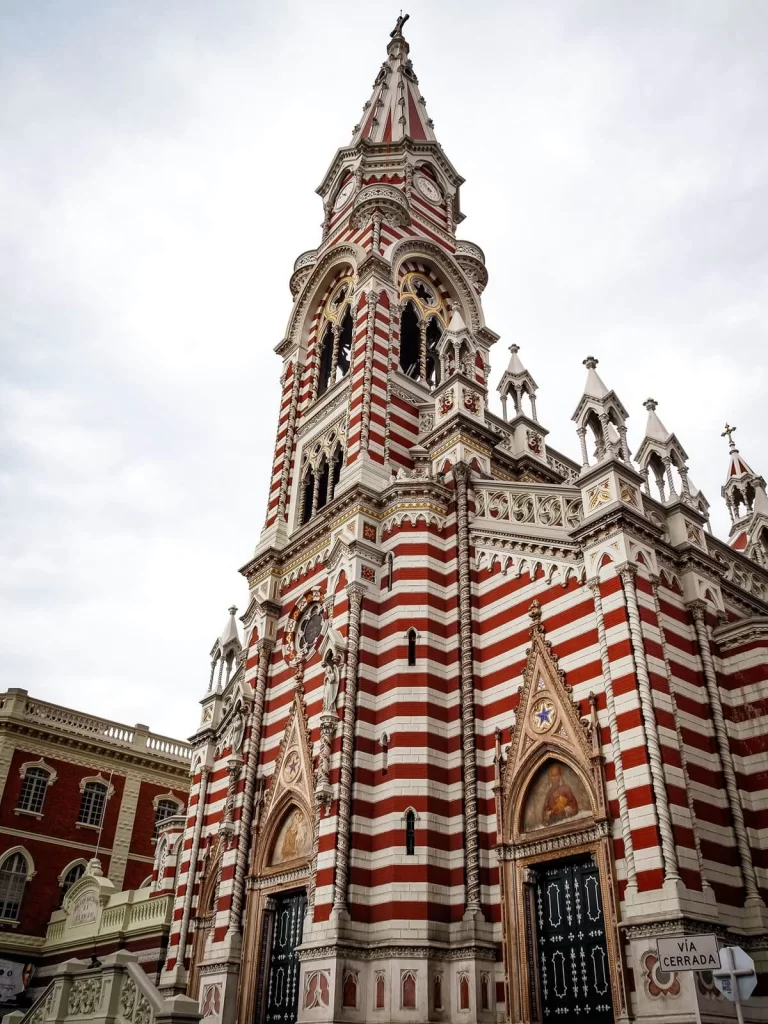
7. Admire Santuario Nuestra Señora del Carmen
A church’s interior is often more interesting than its exterior. Well, that’s definitely not the case with the National Shrine of Our Lady of Carmen. This catholic church is fascinating inside and out.
Construction on the church started in 1926 and it was consecrated in 1938. It was built in the Florentine Gothic Style, but also has Byzantine and Moorish touches thanks to the architect being known to mix styles. Its distinctive red-and-white striped façade makes it look like a multi-tiered cake. The interior is no less impressive, with the red-and-white decoration continuing inside and making you forget that you’re in Colombia.
Top Tip: If you want to see the inside too, then be there at noon for the daily mass.
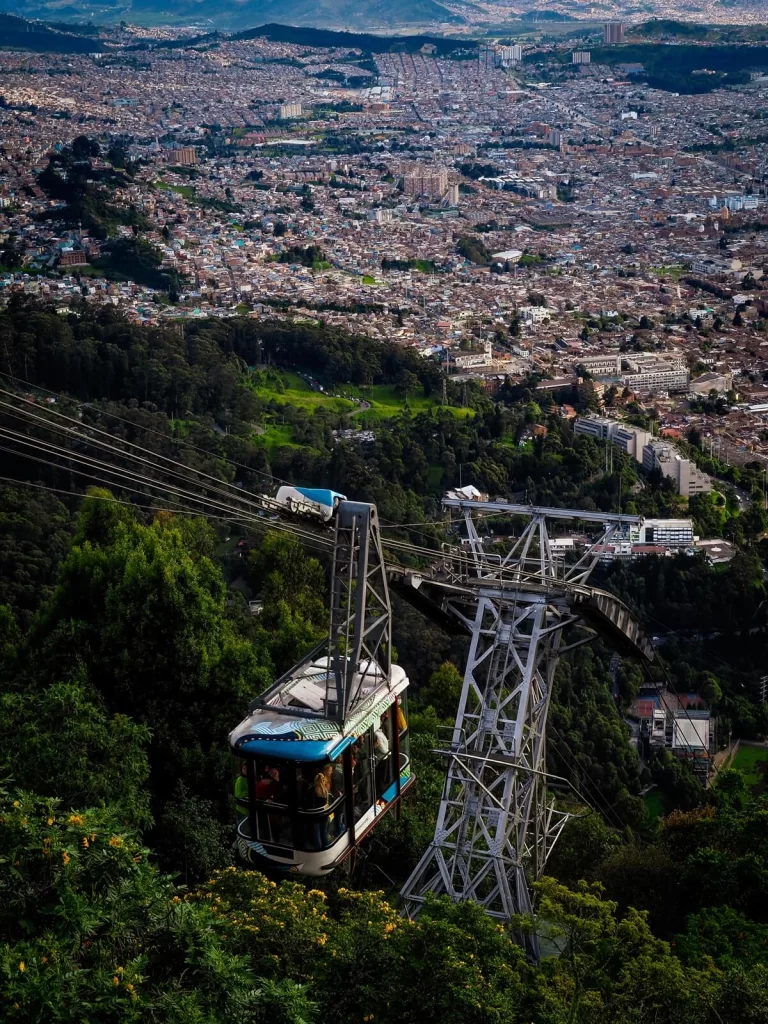
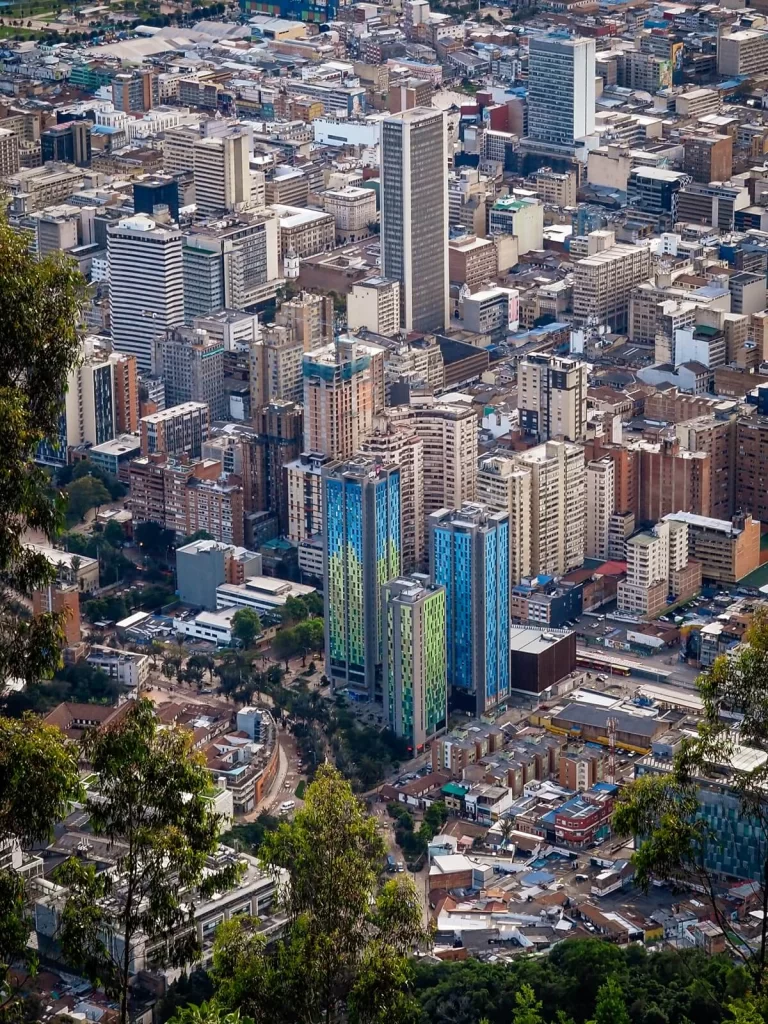
8. Watch the Sunset from Cerro de Monserrate
Possibly the most popular thing to do in La Candelaria, Bogota is to visit Cerro de Monserrate. Located at 3,152 m (10,341 ft) above sea level, the hill provides the perfect viewpoint of the city.
Many people come up Cerro de Monserrate for various reasons. Some of them climb up for religious reasons, and some run up here as part of their fitness training. However, plenty of visitors arrive here for the fantastic views they can get over the Colombian capital. If you’re here for the views too, then try to time your visit just before sunset. That way you can appreciate the views in daylight, experience an incredible sunset and, if you stay long enough, you can see the city lights at night too.
Entry Fee. There are a few ways you can reach the viewpoint. You can hike, take a cable car or go up in a funicular. Hiking is free, but a one-way cable car or funicular ride costs 16,000 COP ($4 USD) and a roundtrip journey is 27,000 COP ($7 USD) from Monday to Saturday. On Sundays there’s a discount for visitors, with a one-way trip costing only 9,000 COP ($2.25 USD) and a return trip costing 16,000 COP ($4 USD).
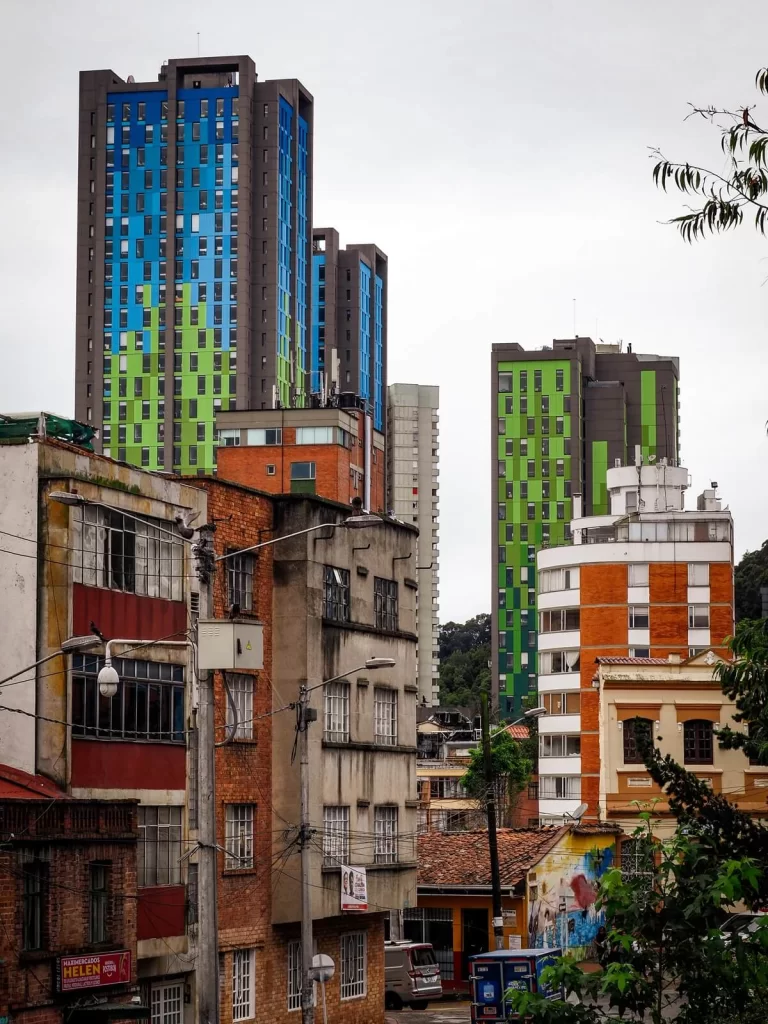
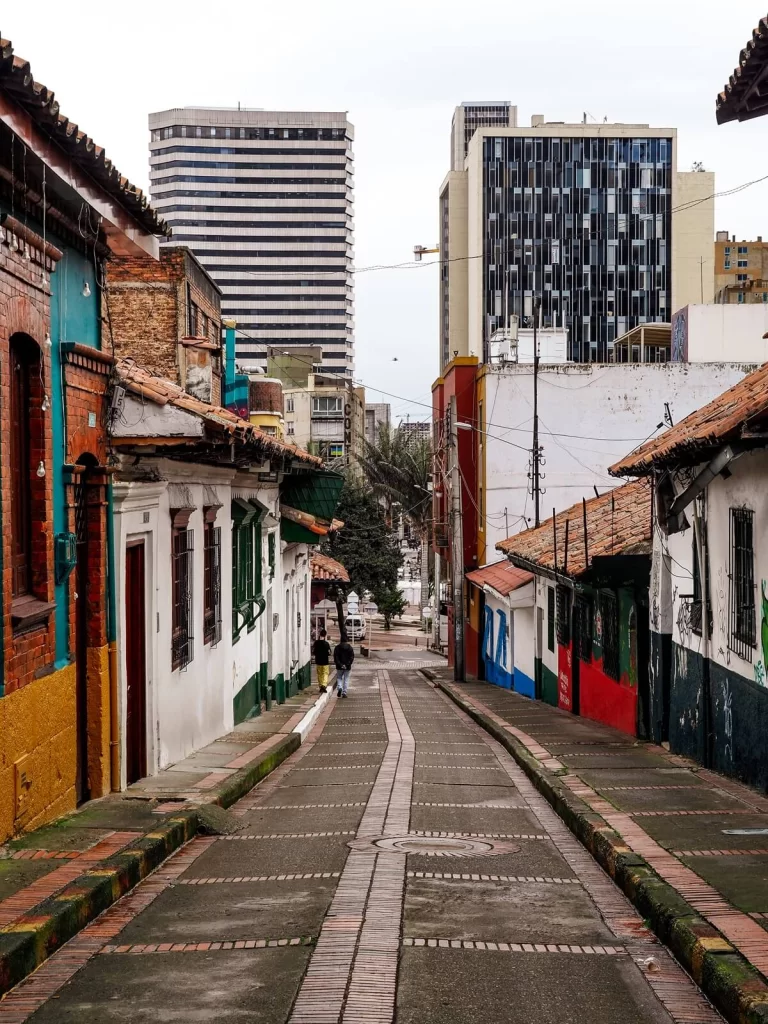
Where to Stay in La Candelaria, Bogota
La Candelaria is a great place to base yourself if you’re visiting Bogota. There are plenty of hotels and hostels in this area for all budgets and needs. La Candelaria is also filled with cafes, bars and restaurants and is generally a walkable district. Below are some places you can check out:
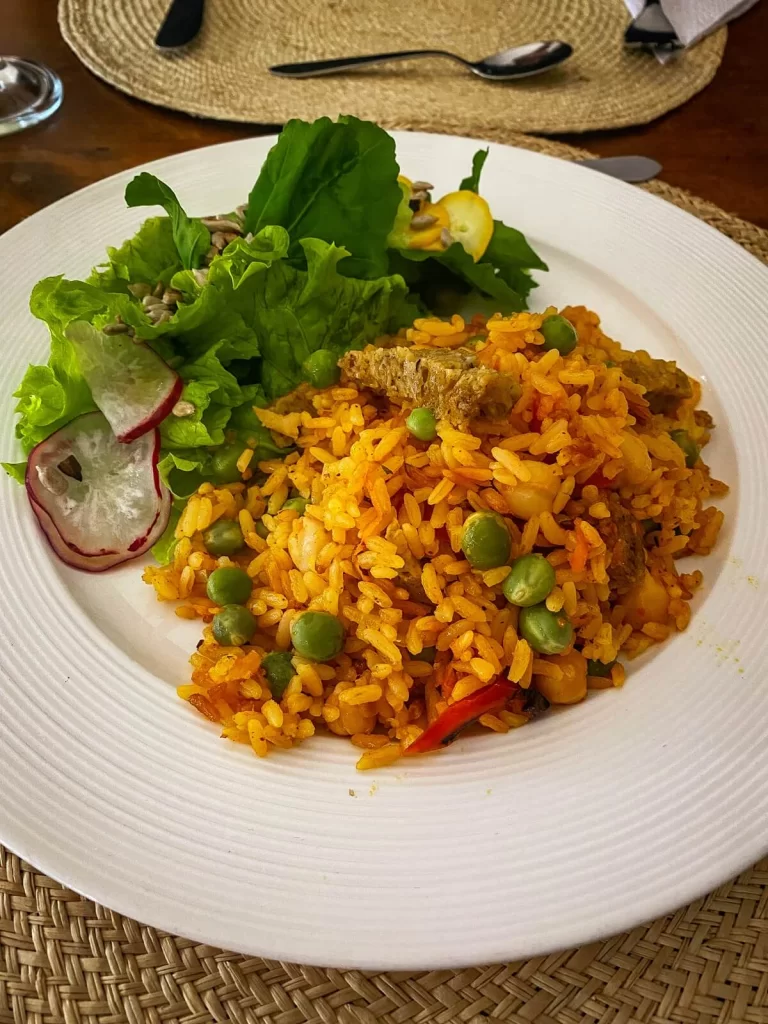

Where to Eat in La Candelaria, Bogota
There are plenty of places to eat in the La Candelaria neighbourhood of Bogota. You definitely won’t get hungry as you’re exploring La Candelaria. Below are some of our favourite spots we ate at during our stay:
- Quinua y Amaranto is a small restaurant serving great vegetarian and vegan food. Definitely come here to get a lunch menu.
- Nativa Arte y Comida Natural is a vegan restaurant that also offers some nice lunch deals.
- Mercy Vegan Food is another small vegan restaurant with very friendly staff.
- Juan Valdez Cafe is basically the Starbucks of Colombia. Whilst it’s a large chain, we definitely enjoyed popping in there for a quick coffee and some pastries every now and again.

Final Thoughts on Things to Do in La Candelaria, Bogota
After hearing some mixed reviews from people who had visited Bogota, we have to say that we thoroughly enjoyed our time wandering around La Candelaria. Without doubt, the street art and murals covering the streets made them some of our favourite ones to walk along. Although we’re not really big museum people, we had a fantastic time visiting the Gold Museum and the Botero Museum.
Have you ever been to La Candelaria in Bogota before? If so, what places did you visit and what was your favourite spot? If not, what would be the place from our list that you would definitely want to visit? Let us know in the comments below.
Now, let your adventure begin,

Our Top Travel Resources
Accommodation: For hotels we always use Booking.com and Hostelworld for hostels. We also book longer stays on Airbnb or Vrbo.
Flights: To find the best flight prices we always check Skyscanner, Google Flights or WayAway. Then we also check the airlines’ websites too for comparison.
Car Rentals: We use Discover Cars when we want to rent a car as it compares local, national and international companies.
Activities: If we book organised tours we always check either GetYourGuide or Viator.
Foreign Currency: Whenever we can we prefer to pay in local currency and for that we always use our Wise card. We can easily withdraw money from the ATM or pay by card at most shops and restaurants.
Travel Insurance: We never go anywhere without travel insurance. You never know what will happen on your trip, so good travel insurance like SafetyWing can protect you in case of injury, illness, theft and cancellations.
eSIM and VPN: To get data abroad we use Airalo which is an app that allows you to download a prepaid eSIM to your phone in over 190 countries. Make sure to have a VPN to avoid hackers accessing your personal data when using public WIFI. We use Surfshark which is the only VPN that offers one account on unlimited devices.

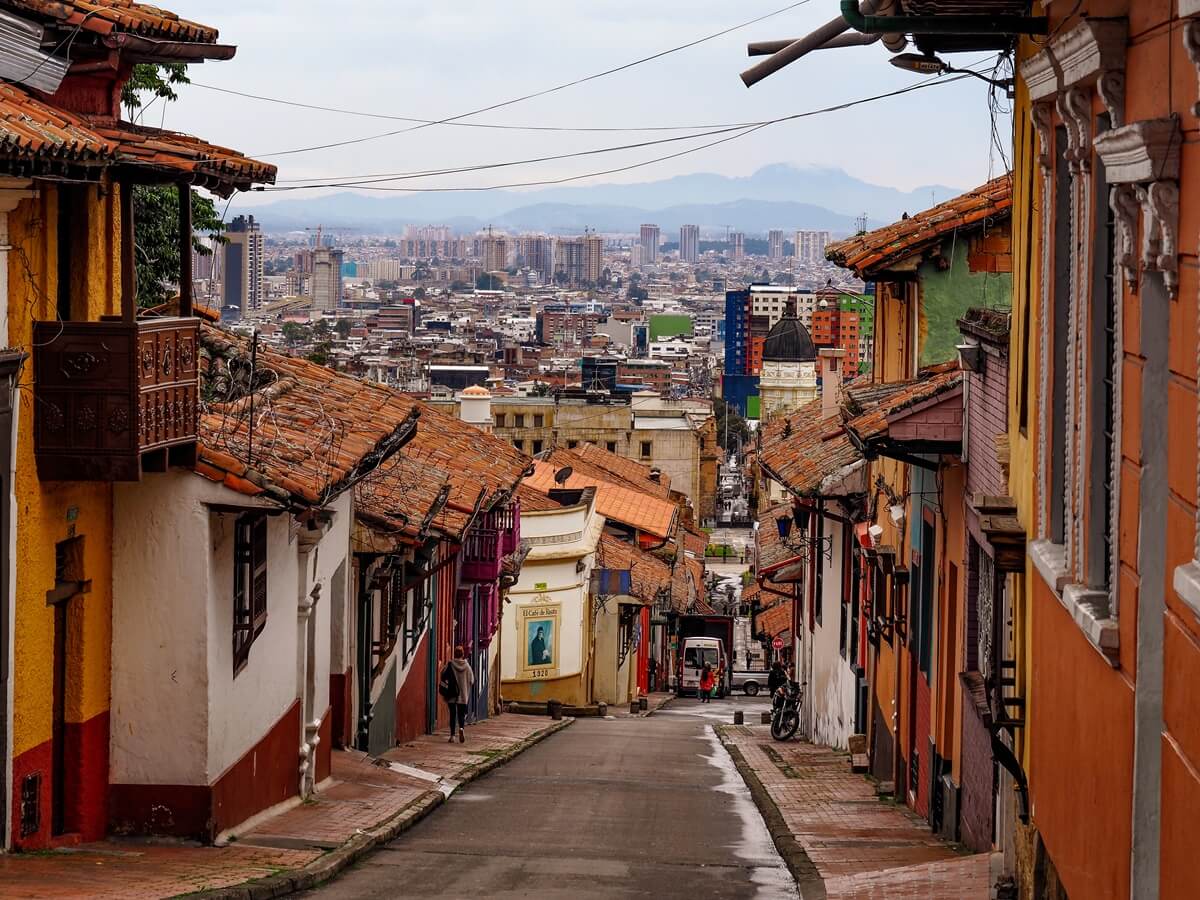
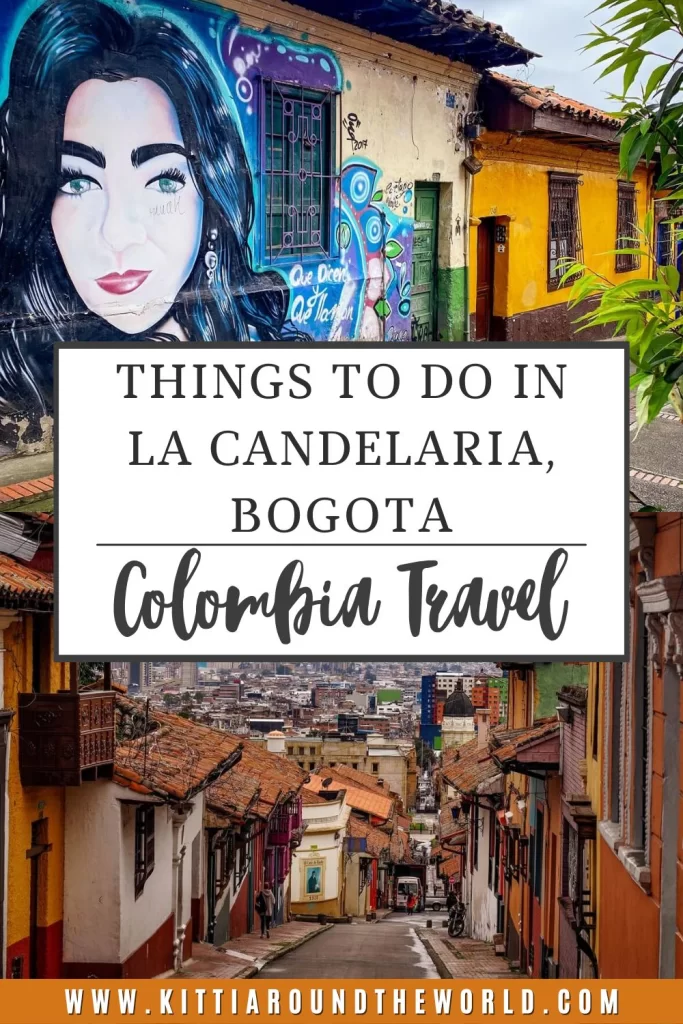
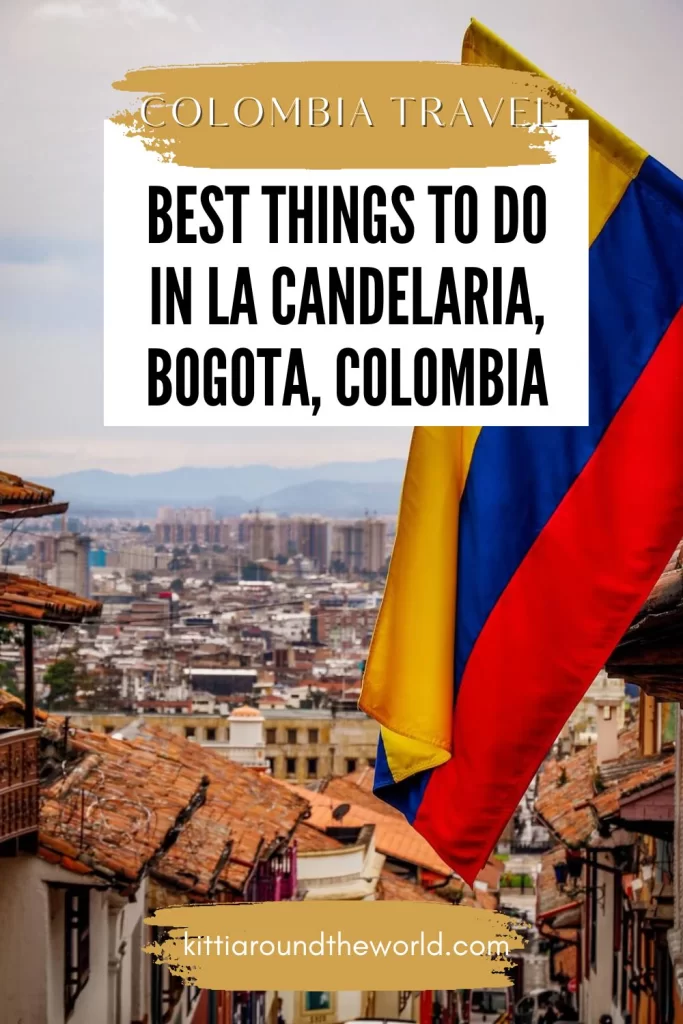
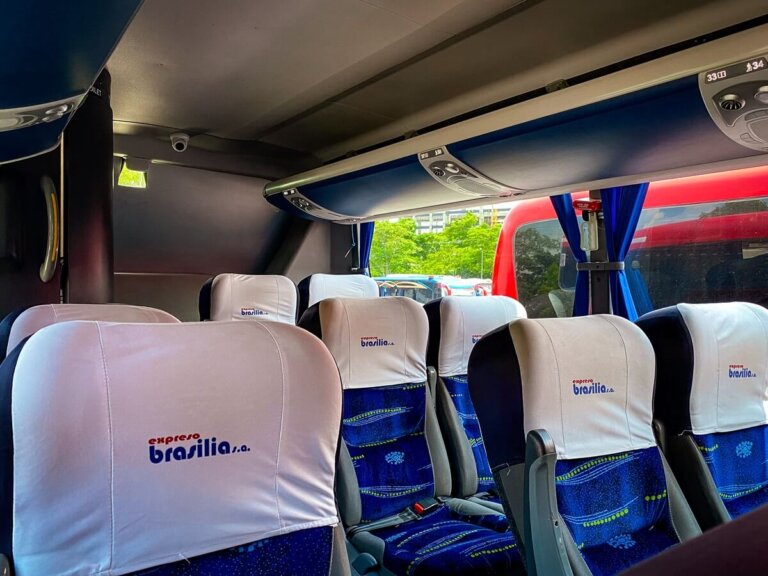

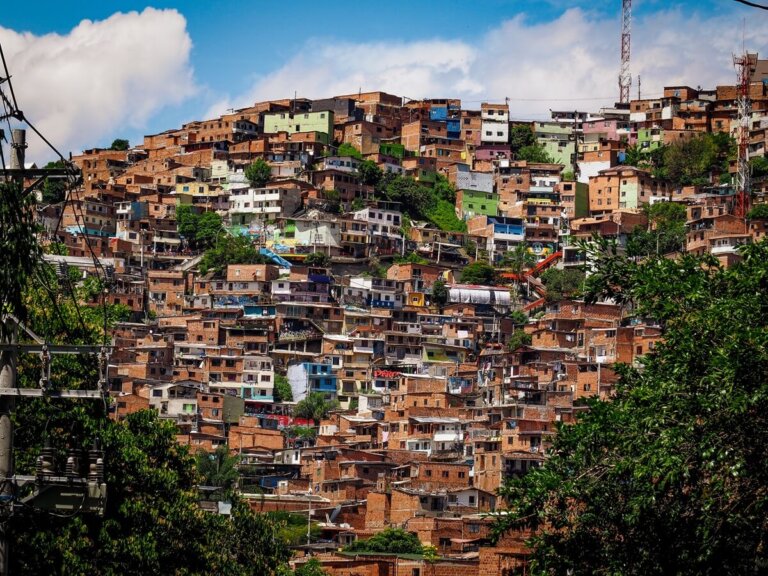
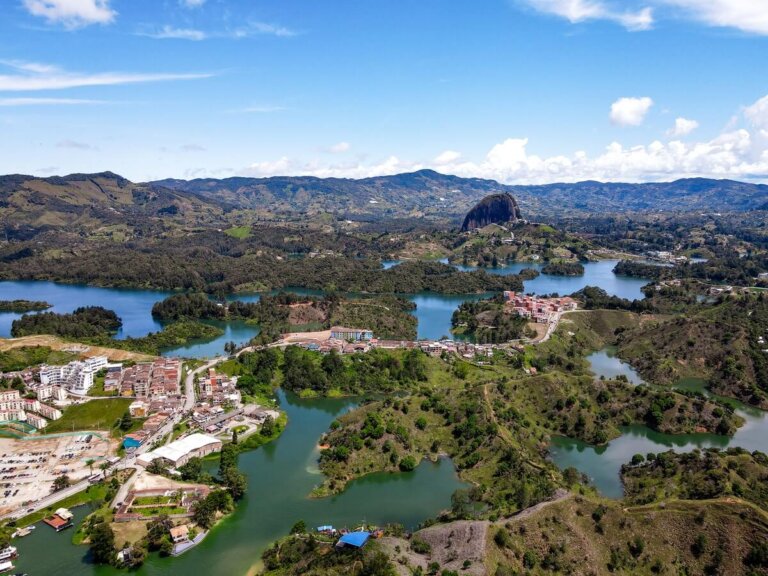
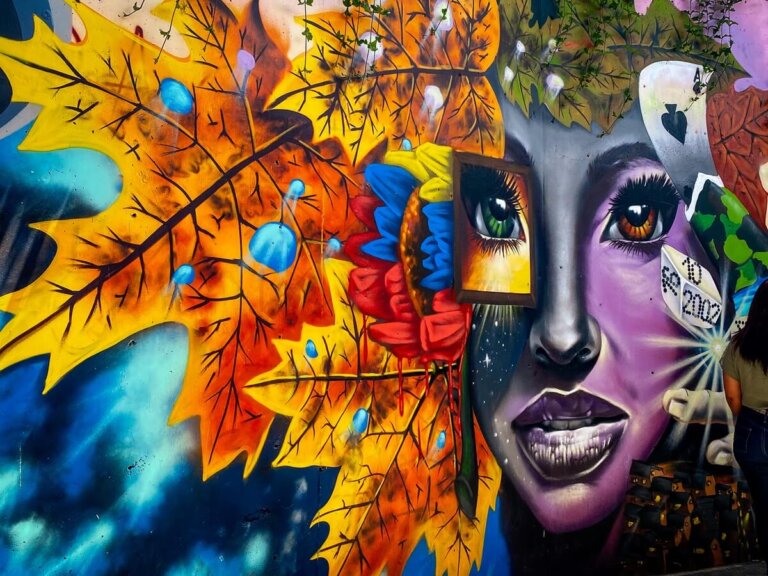
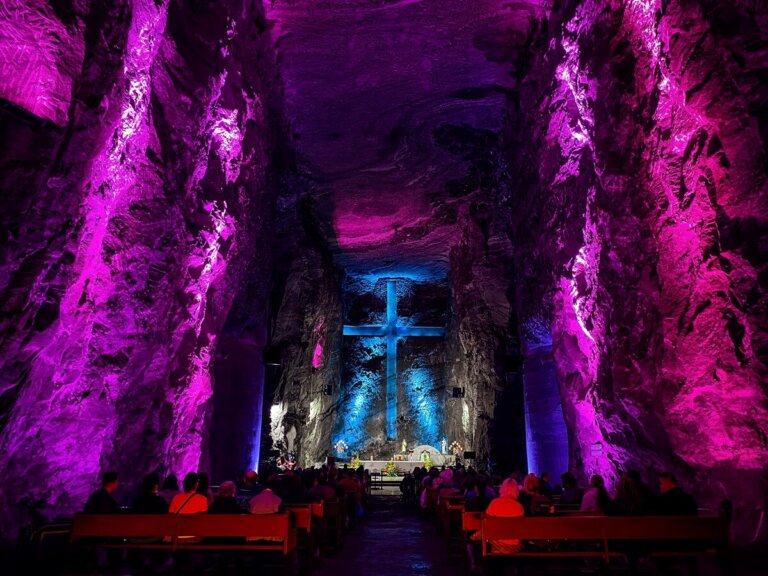
Great content! Very colourful! Thanks for sharing.👌
Thank you Karan 🙂